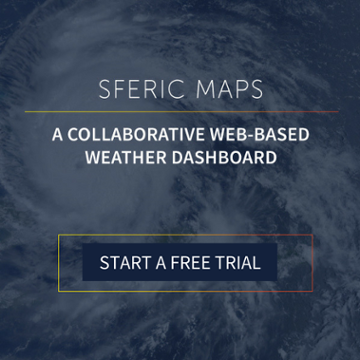Everything You Need to Know About Tsunami Warnings
- Jan 25, 2018

Receiving tsunami warnings is not fun. Take it from the folks in Alaska. After a 7.9 magnitude earthquake in the Gulf of Alaska, residents in Kodiak heard tsunami sirens. While officials eventually called off the tsunami warnings, the initial fear still shook up both Alaska and the Pacific Northwest coast of the contigous U.S. Many residents and key decision-makers did not know what to expect and what each warning meant.
That’s why we thought it was a great idea to do a deep dive into the different types of tsunami warnings. These messages all have different meanings. They also require people to take different precautions. If you live on the coast this read is well worth the time if you find yourself in a scary tsunami situation. It’s great for everyone on the coast – from meteorologists to people who could care less about the weather.
Remember, if you want to receive other NWS alerts in real-time with our advanced Dangerous Thunderstorm Alerts from us here at Earth Networks, you’ll definitely want to take Sferic Maps for a test drive.
Tsunami Warning
The first tsunami message we’ll cover is a tsunami warning. You’ll receive a tsunami warning is a tsunami with the “potential to generate widespread inundation,” is imminent, expected, or already happening. These are the most important tsunami warnings to react to right away.
When a tsunami hits, coastal flooding and powerful currents can occur for several hours. This means that everyone inside the tsunami hazard zone must evacuate. This is a lot of pressure on residents as well as on emergency management crews who are responsible for their well being.
Tsunami Advisory
The next step down is a tsunami advisory. These are issued when a tsunami with the potential to cause dangerous waves and strong currents to those on or near the water is imminent, expected, or occurring. the main difference between a warning and an advisory is that inundation is not expected with an advisory.
Officials warn that during this advisory people should stay out of the water. People should, in general, also avoid waterways and beaches during the advisory.
Tsunami Watch
The next, less severe, type of tsunami warning is a watch. What’s a tsunami watch? These are alerts that let people know when a tsunami may later impact the watch area. Based on conditions, officials either upgrade the watch or cancel it.
While you shouldn’t get too scared if a tsunami watch occurs, emergency management officials and the public alike should be prepared to take action. Hopefully it gets cancelled, but if not, you should be prepared.
Tsunami Information Statement
This is the best of all tsunami warnings. Tsunami information statements are just that: Statements. It’s just officials updating you that there is no threat, a very distant event, or the threat has yet to be determined.
If you receive a tsunami information statement, relax. There is no immediate danger and you’ll be alright. Just stay tuned to further announcements to see if the threat upgrades and changes to a watch, advisory, or warning.
Where Do They Come From?

All tsunami messages come from Tsunami Warnings Centers. They issue these messages to warn everyone in the area, including:
- Emergency managers
- Local officials
- The public
- Other partners
When it comes to timing, a Tsunami Warning Center issues messages as soon as they can. This depends on the seismic network density and distribution near the earthquake’s point of origin. For example, in regions of high density, you’ll receive messages within five minutes. In areas of lower density the time jumps up to 10-15 minutes.






